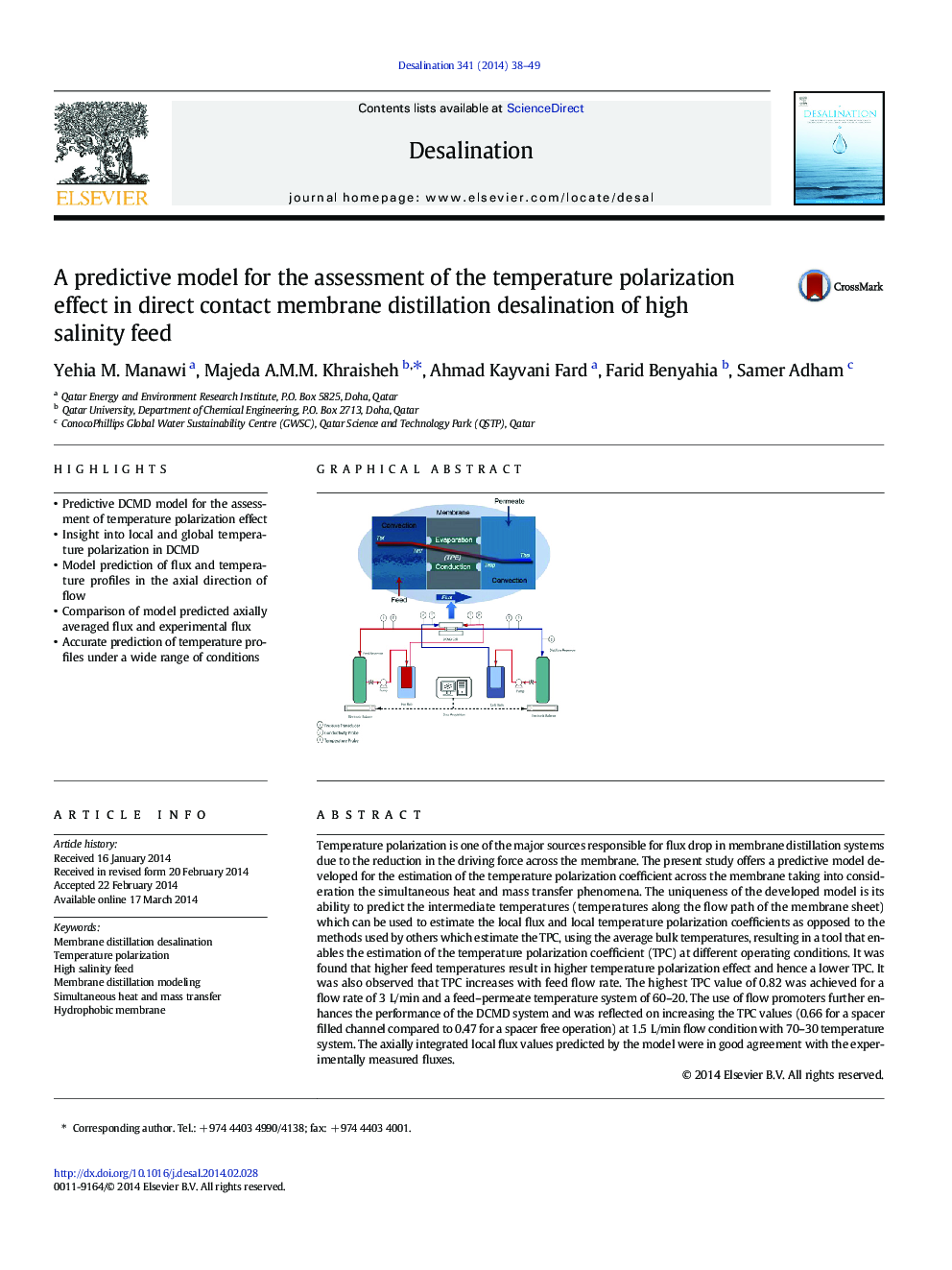| کد مقاله | کد نشریه | سال انتشار | مقاله انگلیسی | نسخه تمام متن |
|---|---|---|---|---|
| 623668 | 1455354 | 2014 | 12 صفحه PDF | دانلود رایگان |
• Predictive DCMD model for the assessment of temperature polarization effect
• Insight into local and global temperature polarization in DCMD
• Model prediction of flux and temperature profiles in the axial direction of flow
• Comparison of model predicted axially averaged flux and experimental flux
• Accurate prediction of temperature profiles under a wide range of conditions
Temperature polarization is one of the major sources responsible for flux drop in membrane distillation systems due to the reduction in the driving force across the membrane. The present study offers a predictive model developed for the estimation of the temperature polarization coefficient across the membrane taking into consideration the simultaneous heat and mass transfer phenomena. The uniqueness of the developed model is its ability to predict the intermediate temperatures (temperatures along the flow path of the membrane sheet) which can be used to estimate the local flux and local temperature polarization coefficients as opposed to the methods used by others which estimate the TPC, using the average bulk temperatures, resulting in a tool that enables the estimation of the temperature polarization coefficient (TPC) at different operating conditions. It was found that higher feed temperatures result in higher temperature polarization effect and hence a lower TPC. It was also observed that TPC increases with feed flow rate. The highest TPC value of 0.82 was achieved for a flow rate of 3 L/min and a feed–permeate temperature system of 60–20. The use of flow promoters further enhances the performance of the DCMD system and was reflected on increasing the TPC values (0.66 for a spacer filled channel compared to 0.47 for a spacer free operation) at 1.5 L/min flow condition with 70–30 temperature system. The axially integrated local flux values predicted by the model were in good agreement with the experimentally measured fluxes.
Figure optionsDownload as PowerPoint slide
Journal: Desalination - Volume 341, 15 May 2014, Pages 38–49
